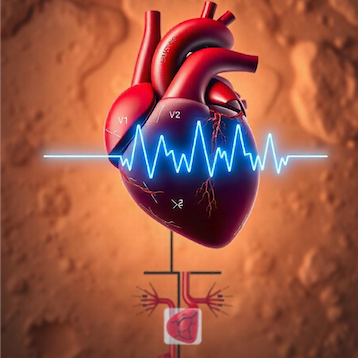The muscle hypothesis of shortness of breath in patients with cachexia

All claims expressed in this article are solely those of the authors and do not necessarily represent those of their affiliated organizations, or those of the publisher, the editors and the reviewers. Any product that may be evaluated in this article or claim that may be made by its manufacturer is not guaranteed or endorsed by the publisher.
Authors
Cachexia is a major contributor to dyspnea (shortness of breath), particularly in conditions like heart failure and chronic obstructive pulmonary disease (COPD) with a prevalence of up to 100%, but also develops frequently in patients with chronic kidney disease (circa 60%) as well as in advanced cancer with an estimated prevalence of about 50% in patients in palliative care settings. In all conditions muscle wasting impacts respiratory function and exercise capacity. The muscle hypothesis of the development of shortness of breath in cachexia presented here provides a pathophysiological framework for understanding muscle wasting induced dyspnea. Persistent systemic inflammation, elevated cytokines such as tumor necrosis factor-alpha and interleukin-6, and hormonal imbalances like insulin resistance drive a catabolic state, resulting in skeletal muscle myopathy and respiratory muscle fatigue. This contributes to hyperactivation of the metabo-ergoreflex, a cardiorespiratory reflex involving mechanoreceptors and metaboreceptors. The hyperactive reflex increases ventilatory drive, exacerbating dyspnea, and triggers sympathetic excitation, leading to vasoconstriction and reduced peripheral blood flow. These mechanisms create a feedback loop of worsening myopathy, reduced exercise tolerance, and heightened breathlessness. In specific diseases, cachexia-related muscle wasting amplifies dyspnea through disease-specific mechanisms. In advanced cancer, dyspnea affects up to 80% of patients and is often caused by respiratory muscle fatigue, independent of cardiopulmonary pathology in 24% of cases. In heart failure, muscle wasting worsens dyspnea beyond reduced cardiac output and pulmonary congestion, with mortality increasing by 50% within 18 months in cardiac cachexia. COPD cachexia impairs respiratory muscles, independently predicting mortality beyond airflow obstruction. Current management of cachexia includes nutritional support, physical activity, pharmacological agents, and experimental therapies targeting inflammation, cytokines, and anabolic pathways. Despite these efforts, cachexia remains largely irreversible. Future directions include precision diagnostics leveraging artificial intelligence and interdisciplinary therapeutic strategies aimed at mitigating its devastating impacts on morbidity, mortality, and quality of life.
Department of Cardiology, San Raffaele Cassino Hospital, Cassino, Italy
How to Cite

This work is licensed under a Creative Commons Attribution-NonCommercial 4.0 International License.
PAGEPress has chosen to apply the Creative Commons Attribution NonCommercial 4.0 International License (CC BY-NC 4.0) to all manuscripts to be published.
Similar Articles
- Elias Tassoulas, Dimitrios Tasoulas, Christos Papaconstantinou, Ioannis Chlorogiannis, Prognostic factors and outcome in patients submitted into coronary artery bypass surgery with total arterial myocardial revascularization , Global Cardiology: Vol. 2 No. 4 (2024)
You may also start an advanced similarity search for this article.

 https://doi.org/10.4081/cardio.2024.57
https://doi.org/10.4081/cardio.2024.57














